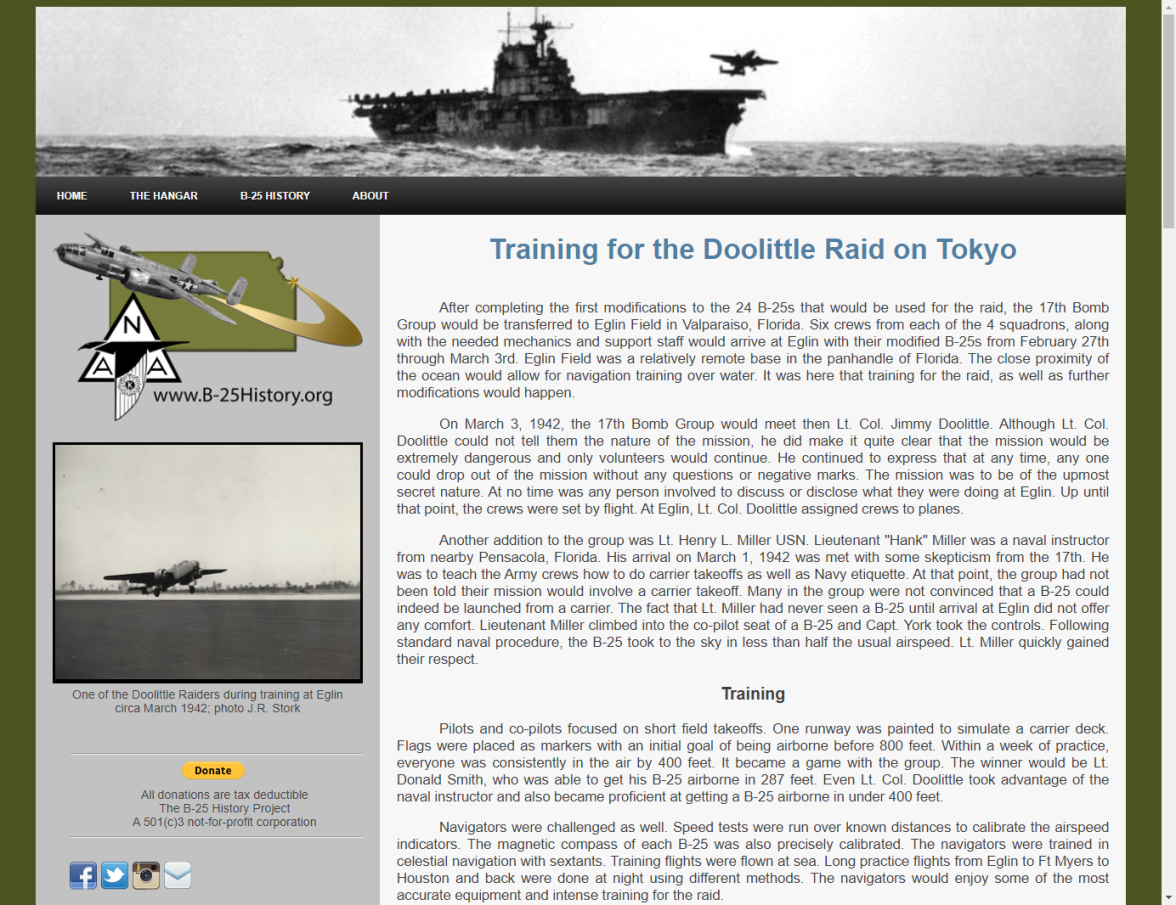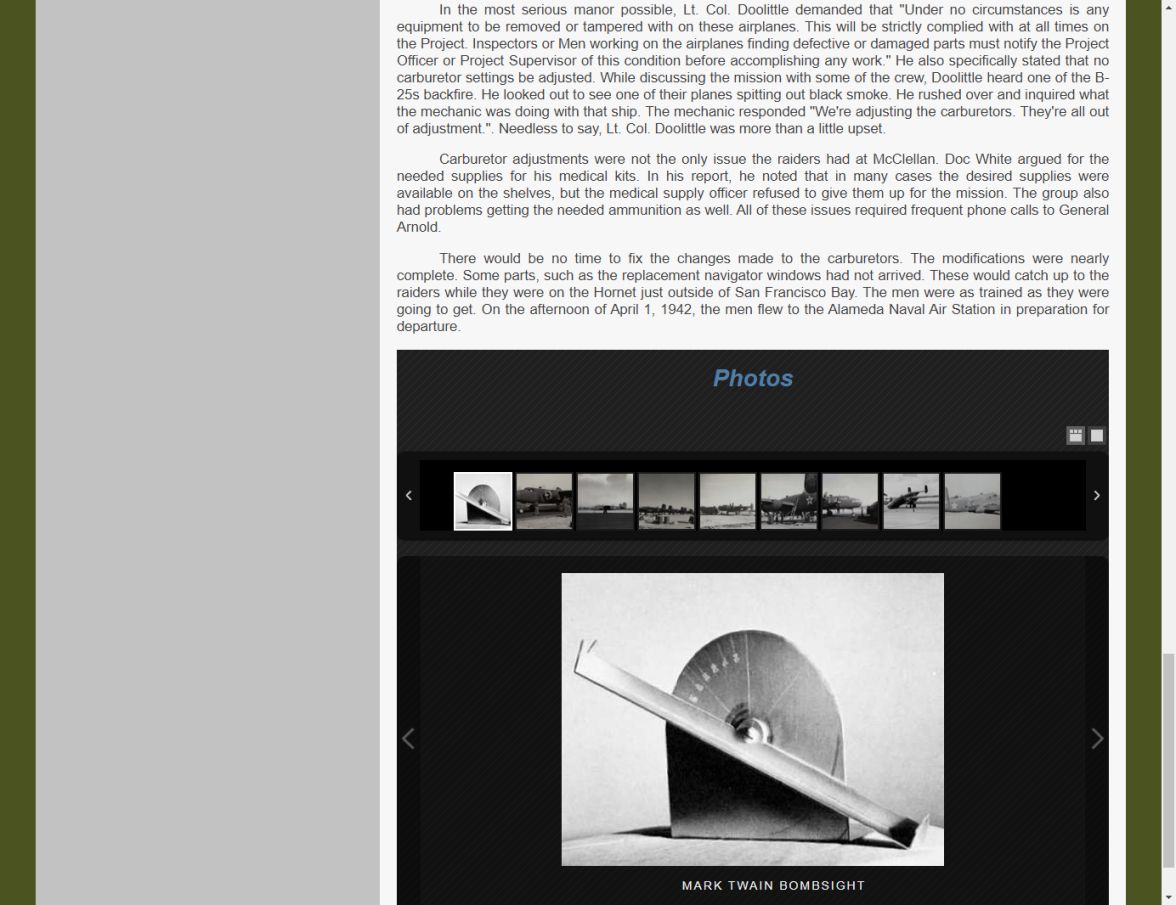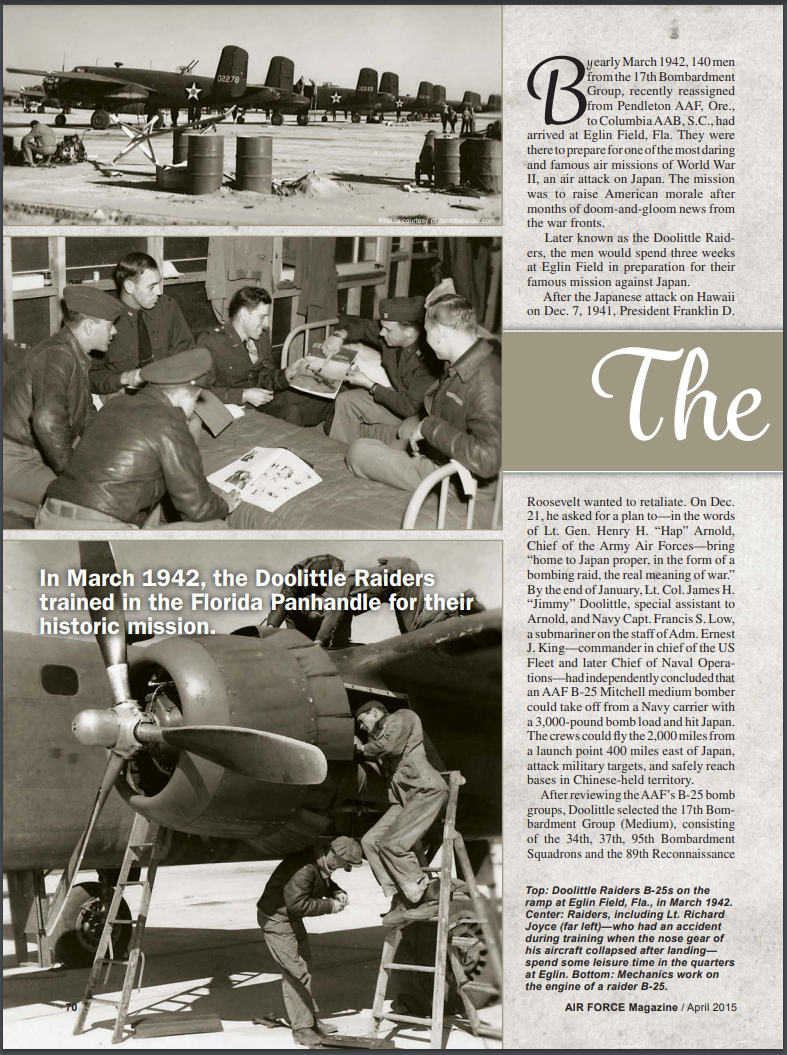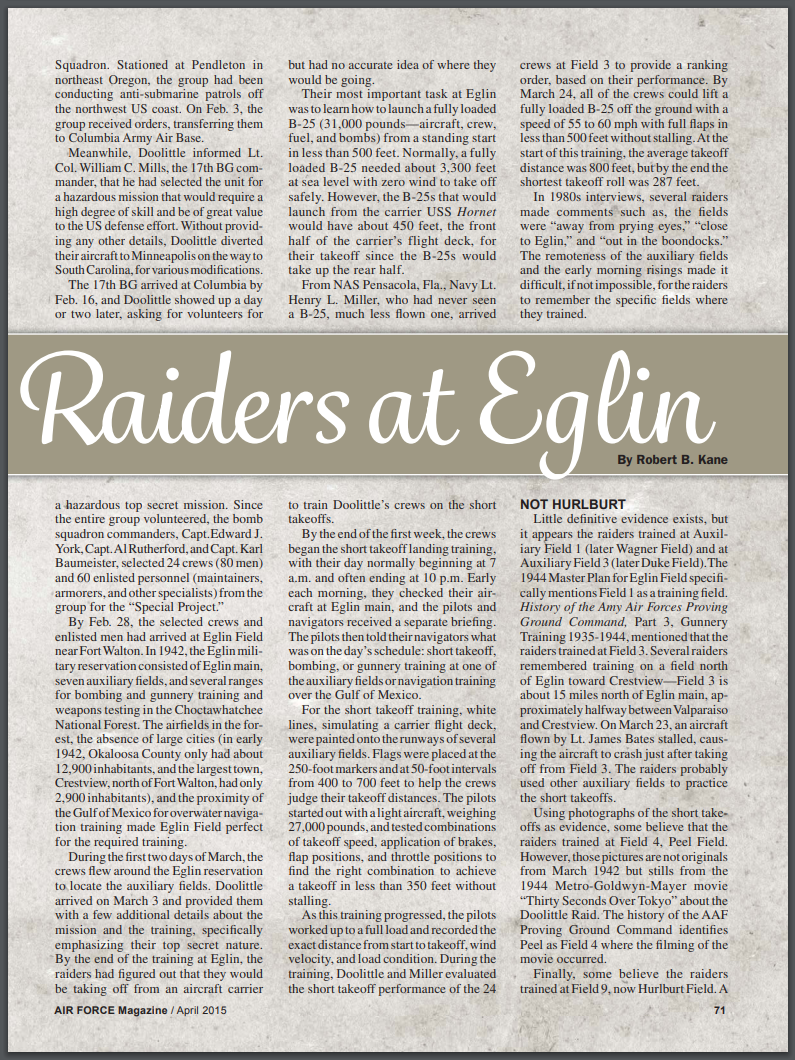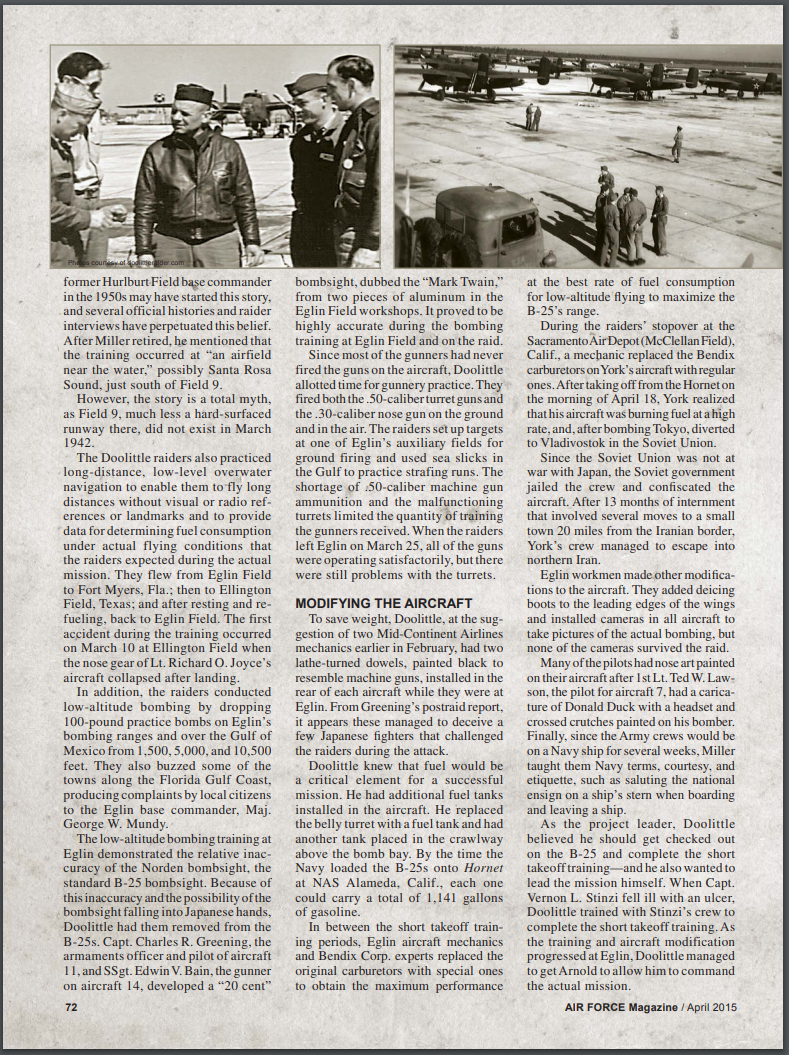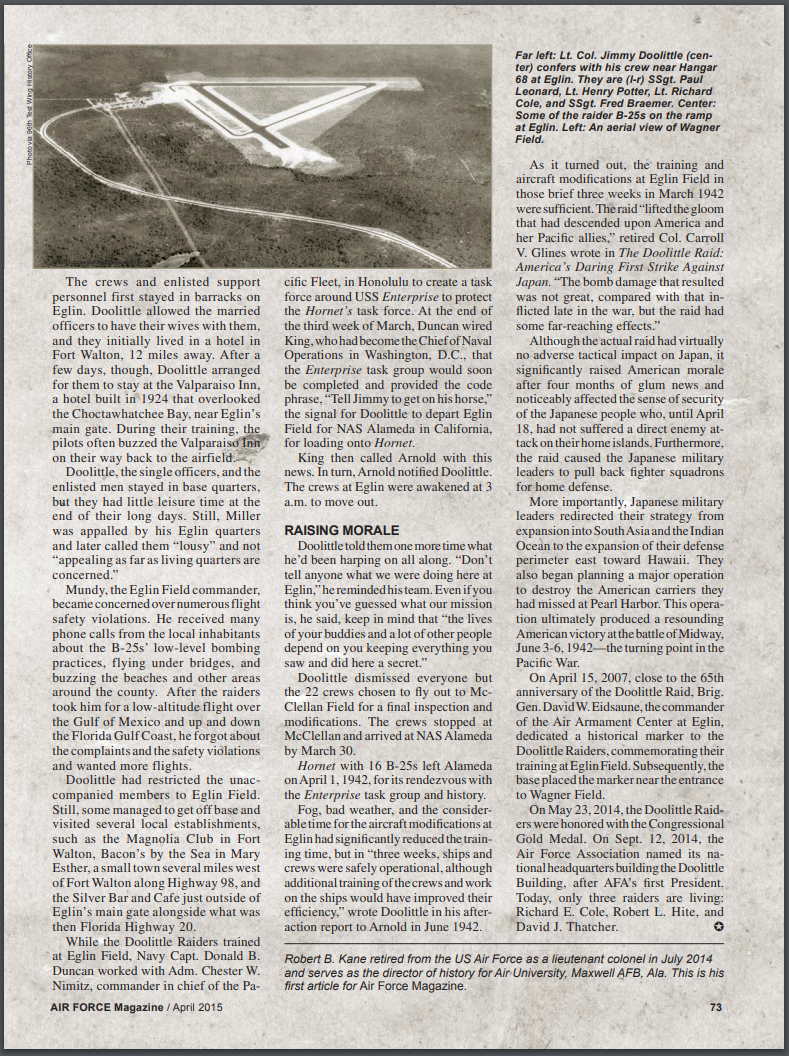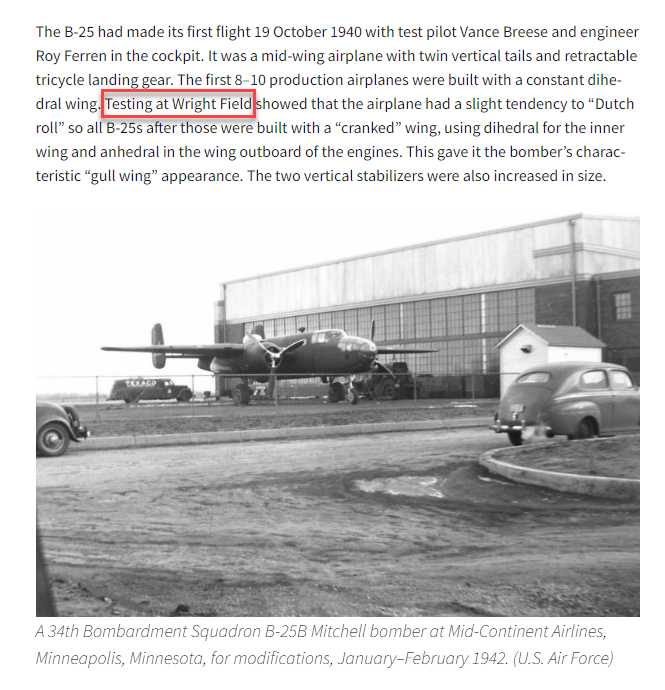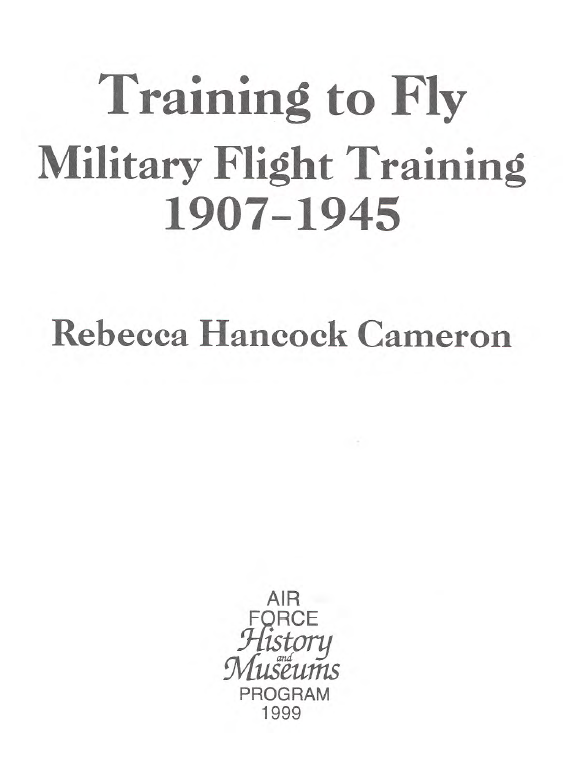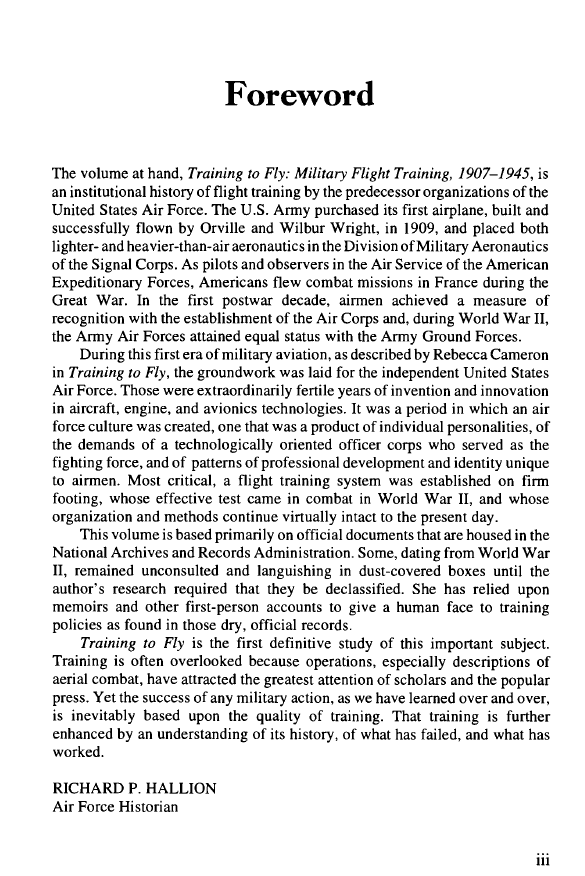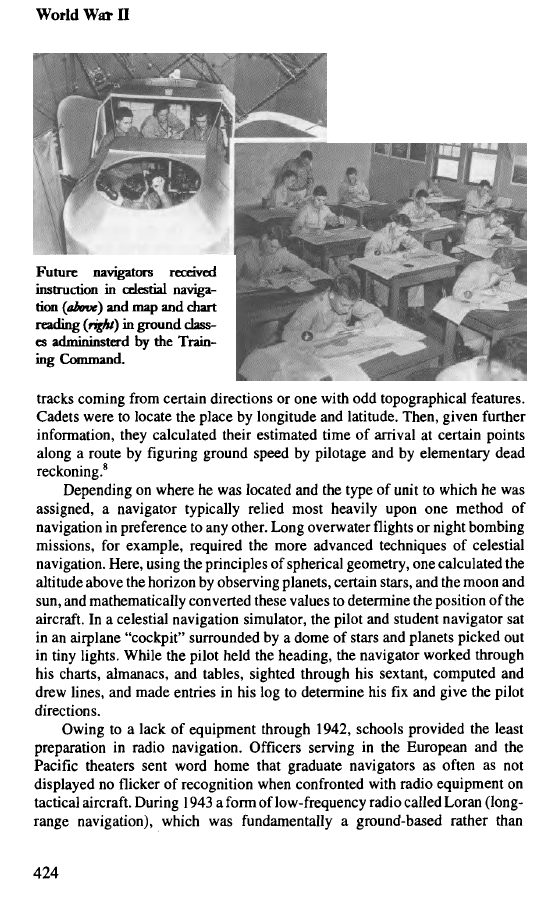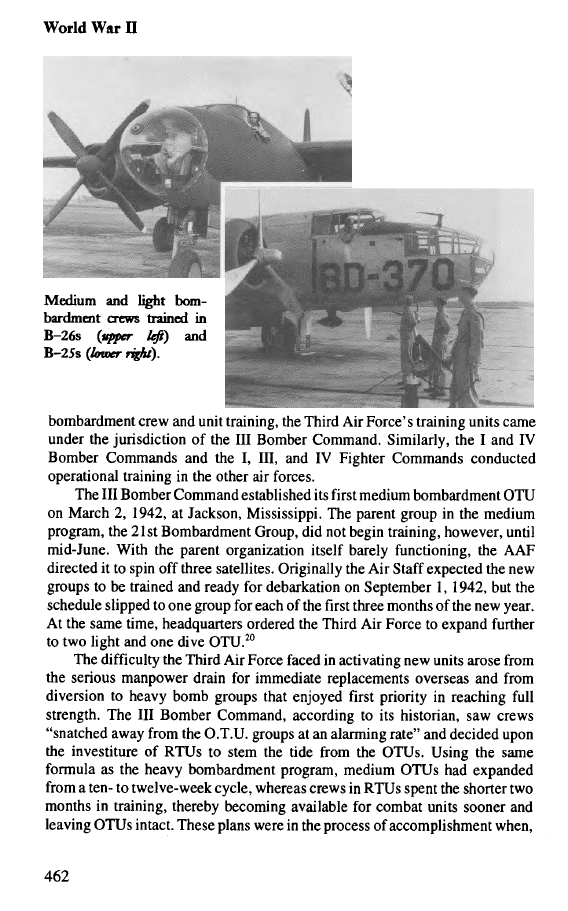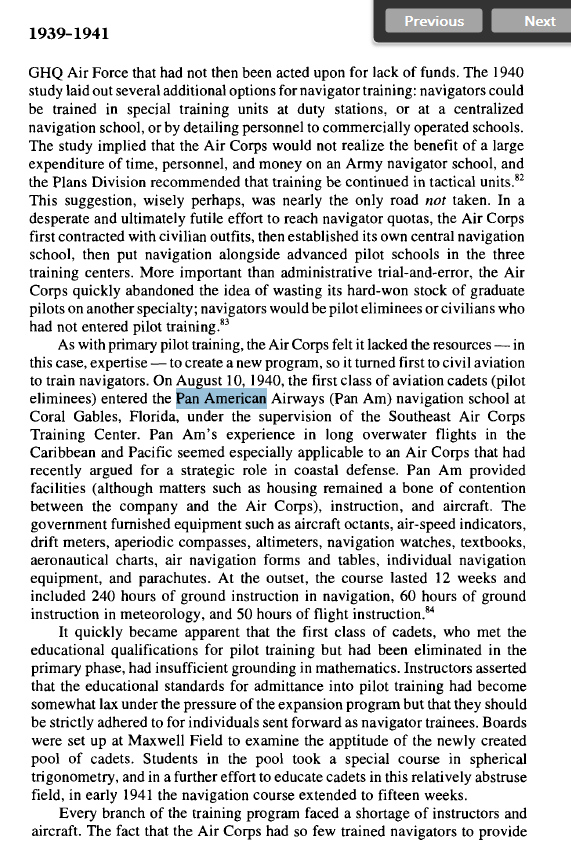Anyone have a historical watch?
Lépine
·Lépine
·Lépine
·Omegafanman
·Thanks for the updated / new info. Hopefully someone can ID the Doolittle watch from that clear picture. The evidence is strong that they attempted to use celestial navigation but looking at the mission brief and the aircraft design that was always going to be impractical.
I have seen certified pocket watch style Navigator watches referenced for the B25 so clearly at some point bomber crews were using those instrument type chronometers as opposed to standard wristwatches. Interested to see why the rest of you investigations unearth in relation to the Weems link and Mitscher.
.
I have seen certified pocket watch style Navigator watches referenced for the B25 so clearly at some point bomber crews were using those instrument type chronometers as opposed to standard wristwatches. Interested to see why the rest of you investigations unearth in relation to the Weems link and Mitscher.
.
Lépine
·Well, if you think about it, The Mitchells were launced way far in advanced of where they were supposed to be. Which means, they launched way in advanced of any planned course heading and bearing they trained and practiced. You have to ask yourself, was there enough time for the flight desk to plot a new course after they were spotted by the Japanese fishing boat and the immediate launch of the B25s. If radio message reached Japan and they were ready, it was all over.
How did they find Tokyo, the course heading and distance would be completely different for dead reconning to work accurately. Mid flight course corrections would be necessary. No one had ever flown over Tokyo, they didn't know what landmarks to look for to see if they were on course or close by and it's all ocean so no landmarks or reference points. They were flying very low heights above the ocean to avoid detection and getting fired upon before reaching the capital. How could they even see where Japan was or know if they were headed the right way?
Without Celestial Navigation, they would not have known where was Tokyo. Dead reckoning works well if there is no drift and if you know where you started from, heading, and average velocity. You have a major problem if you don't know exactly the course you are supposed to follow.
"Doolittle and Hornet skipper Captain Marc Mitscher decided to launch the B-25s immediately—10 hours early and 170 nautical miles (310 km; 200 mi) farther from Japan than planned.[note 6] After respotting to allow for engine start and runups, Doolittle's aircraft had 467 feet (142 m) of takeoff distance.[34] Although none of the B-25 pilots, including Doolittle, had ever taken off from a carrier before, all 16 aircraft launched safely between 08:20 and 09:19, though Doolittle's bomber was witnessed to have almost hit the water before pulling up at the last second. The B-25s then flew toward Japan, most in groups of two to four aircraft, before flying singly at wave-top level to avoid detection.[35]" -- Wikipedia
https://en.wikipedia.org/wiki/Doolittle_Raid
How did they find Tokyo, the course heading and distance would be completely different for dead reconning to work accurately. Mid flight course corrections would be necessary. No one had ever flown over Tokyo, they didn't know what landmarks to look for to see if they were on course or close by and it's all ocean so no landmarks or reference points. They were flying very low heights above the ocean to avoid detection and getting fired upon before reaching the capital. How could they even see where Japan was or know if they were headed the right way?
Without Celestial Navigation, they would not have known where was Tokyo. Dead reckoning works well if there is no drift and if you know where you started from, heading, and average velocity. You have a major problem if you don't know exactly the course you are supposed to follow.
"Doolittle and Hornet skipper Captain Marc Mitscher decided to launch the B-25s immediately—10 hours early and 170 nautical miles (310 km; 200 mi) farther from Japan than planned.[note 6] After respotting to allow for engine start and runups, Doolittle's aircraft had 467 feet (142 m) of takeoff distance.[34] Although none of the B-25 pilots, including Doolittle, had ever taken off from a carrier before, all 16 aircraft launched safely between 08:20 and 09:19, though Doolittle's bomber was witnessed to have almost hit the water before pulling up at the last second. The B-25s then flew toward Japan, most in groups of two to four aircraft, before flying singly at wave-top level to avoid detection.[35]" -- Wikipedia
https://en.wikipedia.org/wiki/Doolittle_Raid
Edited:
Omegafanman
·Well, if you think about it, The Mitchells were launced way far in advanced of where they were supposed to be. Which means, they launched way in advanced of any planned course heading and bearing they trained and practiced. You have to ask yourself, was there enough time for the flight desk to plot a new course after they were spotted by the Japanese fishing boat and the immediate launch of the B25s. If radio message reached Japan and they were ready, it was all over.
How did they find Tokyo, the course heading and distance would be completely different for dead reconning to work accurately. Mid flight course corrections would be necessary. No one had ever flown over Tokyo, they didn't know what landmarks to look for to see if they were on course or close by and it's all ocean so no landmarks or reference points. They were flying very low heights above the ocean to avoid detection and getting fired upon before reaching the capital. How could they even see where Japan was or know if they were headed the right way?
Without Celestial Navigation, they would not have known where was Tokyo. Dead reckoning works well if there is no drift and if you know where you started from, heading, and average velocity. You have a major problem if you don't know exactly the course you are supposed to follow.
"Doolittle and Hornet skipper Captain Marc Mitscher decided to launch the B-25s immediately—10 hours early and 170 nautical miles (310 km; 200 mi) farther from Japan than planned.[note 6] After respotting to allow for engine start and runups, Doolittle's aircraft had 467 feet (142 m) of takeoff distance.[34] Although none of the B-25 pilots, including Doolittle, had ever taken off from a carrier before, all 16 aircraft launched safely between 08:20 and 09:19, though Doolittle's bomber was witnessed to have almost hit the water before pulling up at the last second. The B-25s then flew toward Japan, most in groups of two to four aircraft, before flying singly at wave-top level to avoid detection.[35]" -- Wikipedia
https://en.wikipedia.org/wiki/Doolittle_Raid
You will always get variables like wind speed and they must have anticipated the launch site would not be a fixed point. It would be interesting for someone with navigation experience to wade in. I would also be interested to see a plot of the planned and actual routes plus the landing sites for the various crews. I am also sure there would have been intelligence, photos and maps from before the war - otherwise how would they have accurately designated the targets. There are so many transcripts hopefully your ongoing archive ‘raids’ will dig out more solid info. Statements like the -following- make me think it was not pin point precision, but still very brave and impressive. Whatever techniques employed they clearly worked. Of course Doolittles flying experience set him well above the average for navigation.
—They formed up amid low clouds and then headed for Japan at 225 miles per hour, their throttles leaned to conserve fuel. The American planes flew low and hugged the Japanese coastline after making landfall—
Lépine
·Lépine
·Interesting, Doolittle had detailed maps of Japan. Each route has the serial number of the plane
marked over it. It certainly looks like the crews knew exactly where they were going to go.

Routes of ten of the sixteen B-25s. Lieutenant Colonel Doolittle’s airplane, 40-2344, enters the chart at the upper right corner, the exits to upper left. (United States Army)
marked over it. It certainly looks like the crews knew exactly where they were going to go.

Routes of ten of the sixteen B-25s. Lieutenant Colonel Doolittle’s airplane, 40-2344, enters the chart at the upper right corner, the exits to upper left. (United States Army)
Edited:
Lépine
·Waltesefalcon
·This is very interesting. So testing of these bombers in 1940 was at Wright Patterson.
Of course would not make sense for Mitscher to be involved in land based bombers in 1940.
But, maybe after the mission parameters were defined...
ALEJANDRO BOVONE
·Not famous or historic, but interesting. Longines survived D-Day invasion Lt. Col Harold Burton Lee. Researcher into human endurance, research directly contributed to Mexico Olympics British Athlete Training. Some interactions with the 53 Everest team. He was in WW2 from start to VE-Day and left the military after 1968.









He was with the Mobile Field Hospital "Field Ambulance 140" for the entire duration.
such an interesting read. much appreciated
Lépine
·Considering Mitscher was attached to the Navy Bureau of Aeronautics, I'd say that you are right and he had no involvement with the development of the B-25. Once Doolittle wanted to know if they could be launched from a carrier Mitscher would have been the guy to consult. With his interwar background in the Bureau of Aeronautics and his command of a carrier at the time the raid was being developed he would have been the authority on how to get it done. So it makes sense to me that he would have been intimately involved with Doolitle's raid at that point. Have you looked into the Naval archives?
If you have any links or emails you can suggest, I will love to look them up. Right now, I am reading an article from Rebecca Cameron of the Air Force History and Musems Program written in 1999. This is a great paper. If anyone wants a copy, let's figure out how to distribute it.
Guess what, That image in the upper left is a CNT. CNT was developed by Link and P.V.H. Weems.
Note: Pensacola Florida had one.


47,000 graduates of Weems Celestial Navigation
Edited:
Lépine
·
Edited:
Lépine
·The CNT was absolutely amazing for the level of simulation for how to do aerial bombing and Celestial Navigation.
The first one was built in 1941. Then hundreds were built across the United States and allied countries in the next year.

The Patent was pending January 14th, 1939 for the CNT.









It will be interesting to see if Mitscher spent time in the CNT. It is clear that it was standard training for US Army Air Corps by the time PAN AM was in charge of the navigational training.





The first one was built in 1941. Then hundreds were built across the United States and allied countries in the next year.

The Patent was pending January 14th, 1939 for the CNT.









It will be interesting to see if Mitscher spent time in the CNT. It is clear that it was standard training for US Army Air Corps by the time PAN AM was in charge of the navigational training.





Edited:
Lépine
·Lépine
·such an interesting read. much appreciated
Waltesefalcon
·@Seiji PM sent.
Lépine
·I tried some poor attempt at photo forensics. The court room will appreciate the fact I don't do this professionally...

The size of the Doolittle watch is about 33-34mm assuming my hands are about the same size as Doolittle's.
He was 5 feet 4 inches tall. I am 5 feet 10 inches tall.
With the same lug width of the Annapolis Weems.
Essentially it is the same size, but from the above video, you can see it is not likely a weems.


The size of the Doolittle watch is about 33-34mm assuming my hands are about the same size as Doolittle's.
He was 5 feet 4 inches tall. I am 5 feet 10 inches tall.
With the same lug width of the Annapolis Weems.
Essentially it is the same size, but from the above video, you can see it is not likely a weems.

Edited:






